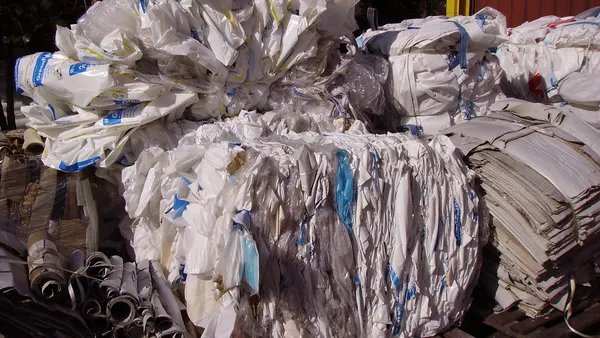The world's largest municipal sanitation department is about to get some unique recognition.
A new nonprofit called the Foundation for New York’s Strongest plans to honor one of the city's most vital uniformed professions and educate residents about the New York City Department of Sanitation's (DSNY) "zero waste to landfills by 2030" initiative. These efforts will go beyond standard public awareness campaigns with more attention-grabbing ideas such as a fashion show and a potential museum.
"One of the core goals is really to amplify the importance of the work that sanitation workers do and strengthen the connection between our workforce and the public," said Elizabeth Balkan, policy director and senior advisor to the commissioner of DSNY. "You’re dependent on the work that Sanitation carries out each and every day."
Balkan, who also serves as the foundation’s executive director, stressed the importance of thinking about collection workers on the same level as police officers or firefighters. DSNY employment is highly competitive, very lucrative and potentially dangerous. Yet many New Yorkers are largely unaware of the more than 7,200 workers and supervisors who keep their streets clean.
By bringing more attention to the people who collect New York’s residential waste, the foundation hopes to also make consumers think about what they’re throwing out.
The organization’s debut event will combine both of these goals with a fashion line made of old DSNY uniforms from designer Heron Preston. Reportedly inspired by his encounter with a trash bag while swimming in the Mediterranean, Preston has come up with a line of "up-cycled" clothing with silk-screen patterns and patches. The items will later be available for sale and potentially featured in Vogue.
Adding to its cachet, the "Uniform" event will be held at DSNY’s Spring Street Salt Shed which has received widespread praise from architecture critics. Proceeds from the Sept. 7 event will go toward the foundation.
Balkan said this unique approach toward highlighting textile waste — an estimated 6% of the city’s residential waste stream — is only the beginning.
"I think there are many more examples of things that fit in with people's current lifestyles now that aren't thought of as zero waste," she said.
Details on future initiatives are still in the works, though the goal of opening a museum has already been established. This would give visitors insight into how the agency has evolved since it was founded in the late 1800s. It could also potentially include the vast collection of items found by retired DSNY worker Nelson Molina during his years on the job.
Chronicling the complex history of sanitation in New York through a museum has been a long-time dream of DSNY anthropologist-in-residence Robin Nagle. Last month, Nagle spoke to Waste Dive about the need to change cultural perceptions of sanitation workers and raise awareness about what the job entails.
The museum is likely still years away from coming to fruition, though in the meantime the Foundation for New York's Strongest will be working to raise funds and roll out other projects related to the "0x30" initiative. The foundation is seeking support and open to ideas on new ways to engage the public around where their waste goes.










